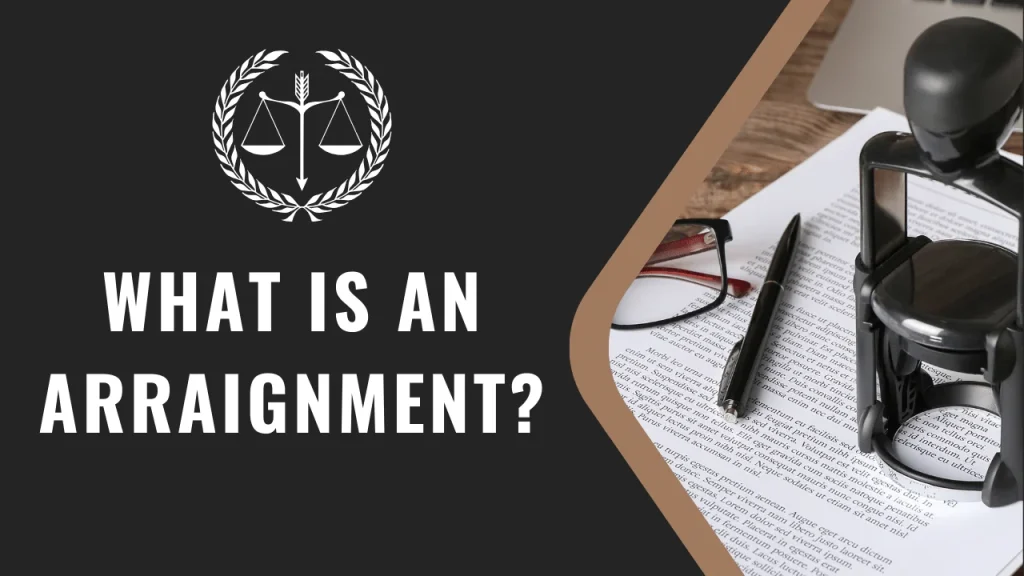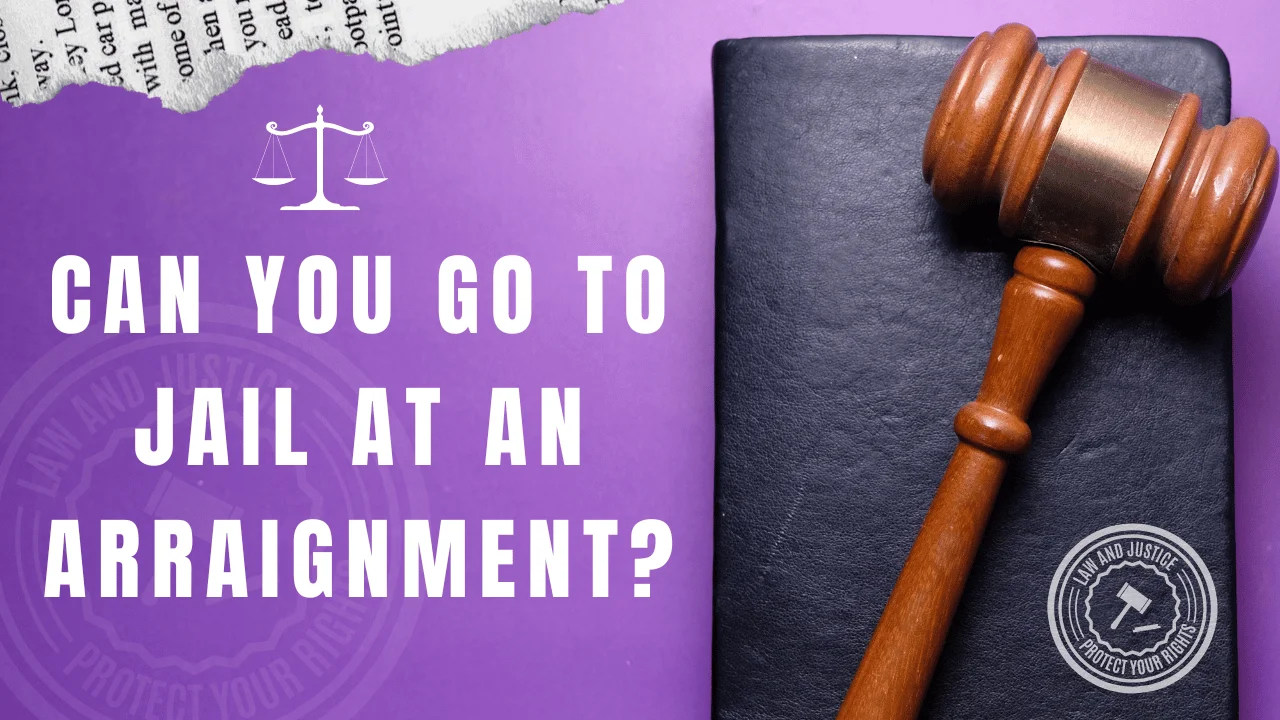When it comes to criminal justice, the arraignment is a crucial moment that can determine how a defendant is treated throughout their time in court. It’s a solemn procedure where the first lines of a legal dispute are drawn. Important decisions concerning a defendant’s release from custody until trial are made at this stage, which also includes the formal presentation of charges. We need to delve deeply into the mechanics and considerations of this early but significant courtroom proceeding—the arraignment—to answer the complicated and nuanced question of whether one can go straight to jail from this stage. Can you go to jail at an arraignment? The answer isn’t straightforward, as it depends on various factors, including the severity of the alleged crime, the defendant’s criminal history, and the judge’s discretion.
What is an Arraignment?

The formal process by which charges are brought against a defendant, their understanding of the accusations is ensured, and their plea in response is gathered during an arraignment. The defendant’s first court appearance after their arrest is a crucial procedural milestone because it is at this point that their legal rights are defined and their future freedoms can be limited or preserved.
Arraignment Process and Jail Time
Arrestment is the initial formality that a defendant typically encounters while dealing with the court system; it sets the stage for subsequent legal proceedings. The crucial decision on bail, which can result in either immediate jail time or release until trial, and other pre-trial proceedings are initiated here.
Bail Considerations at Arraignment
The judge’s bail ruling is a crucial part of the arraignment process. This decision is dependent on a number of elements, such as the gravity of the accusations, the offender’s past, and the danger they pose to the community. If the defendant’s bail is denied or set too high, they could be immediately detained because of this important decision.
Risk Assessment during Arraignment
At the arraignment hearing, the judge performs a risk assessment by considering the offender’s propensity to commit additional crimes upon release or to run away. Both bail decisions and the larger question of whether incarceration is necessary pending trial are affected by this evaluation.
Pleading Not Guilty and Jail Outcomes
A defendant’s right to enter a not guilty plea moves the legal process ahead, which calls for an exhaustive evaluation of whether or not the defendant should remain free pending trial. If the court determines that the defendant’s incarceration is essential for the protection of the public or to guarantee that the defendant appears at trial, the decision to grant bail is contingent upon the judge’s risk assessment and other factors.
Detention after Arraignment Criteria
The defendant’s community ties, prior criminal history, and the seriousness of the alleged crime are the primary factors in determining the length of time they may be detained following their arrest. Careful consideration of these factors is given to determine if incarceration is the best course of action to reduce risk until trial.
Arraignment Outcomes for Serious Crimes
There is a great deal more scrutiny and the stakes are much higher during the arraignment process when the charges are serious. Bail and detention policies are determined by the judge based on the seriousness of the alleged crime; for more serious offenses, jail time pending trial is more likely to be the outcome.
Judge’s Decision on Bail and Jail
The bail decision of the judge is crucial, particularly in cases involving serious crimes. In such instances, the gravity of the crime and the danger to society warrant a higher bond amount. An outright denial of bail can result in an individual’s immediate incarceration.
Impact of Criminal History on Arraignment Detention
What happens at the arraignment hearing depends greatly on the defendant’s history of interactions with the justice system. Because their actions in the past might indicate a greater likelihood of reoffending or fleeing, individuals with a criminal record, particularly one involving violent crimes, confront a more formidable opponent when seeking release.
Community Risk and Arraignment Bail Decisions
An important factor to think about is the danger that the defendant is thought to bring to the community. Judges often err on the side of caution when considering whether to release an individual on serious charges because of the potential harm that could come to others or because of the disruption of public order.
Bail Affordability and Jail Detention
The affordability of bail remains a critical factor even after it is granted. Serious charges often carry high bail amounts, which can effectively keep people in jail if they cannot afford it. This is a controversial issue that sparks discussions about justice and equality in the court system.
Pre-trial Detention After Arraignment Process
A grave decision that drastically changes a defendant’s immediate future is the decision to detain them until trial. In this part, we will examine the reasoning behind these decisions and what they mean.
Arraignment for Felony Charges and Jail Risk
Because felonies are so serious, they greatly increase the likelihood of incarceration. Public safety and the integrity of the judicial process are given priority in the legal system, which frequently leads to stricter bail conditions or even denial for individuals accused of felonies.
Flight Risk Assessment at Arraignment
Arrest decisions are based on assessments of flight risk. The likelihood of a defendant’s appearance at trial is increased when judges impose stringent conditions on their release or deny bail altogether if they are believed to be fleeing.
Detainment Until Trial Post-Arraignment
Some defendants begin a lengthy period of detention awaiting trial with the arraignment. The presence of strong evidence, a high flight risk, or a substantial threat to the community increases the likelihood of this outcome.
Frequently Asked Questions
Q1: What happens during an arraignment?
A1: During an arraignment, the defendant is formally charged, informed of their rights, and asked to enter a plea.
Q2: Can you be sent to jail immediately after an arraignment?
A2: Yes, depending on the case’s circumstances, bail decisions, and risk assessments, a defendant can be sent to jail immediately after an arraignment.
Q3: How does a judge decide on bail during an arraignment?
A3: A judge considers the severity of the crime, the defendant’s criminal history, flight risk, and potential danger to the community when deciding on bail.
Q4: What factors influence a judge’s decision to detain a defendant after arraignment?
A4: Factors include the nature of the charges, the defendant’s criminal record, risk of flight, and threat to public safety.
Q5: How do serious charges affect bail and detention decisions at arraignment?
A5: Serious charges can lead to higher bail amounts or bail denial, increasing the likelihood of jail detention pending trial.
Also Read: Paul Mackoul, MD Lawsuit
Conclusion
At the arraignment, the first decisions are made that will determine the course of the defendant’s legal struggle throughout the criminal justice system. It is crucial to comprehend the complexities of this process in order to navigate what lies ahead, including bail considerations and the consequences of a not-guilty plea. The seriousness of each decision made in court is highlighted by the possibility of post-arraignment detention, particularly for serious offenses. Therefore, the arraignment is a pivotal event that determines the defendant’s future in law and in life in general, rather than just a procedural formality. Additionally, it’s essential to recognize that depending on the nature of the charges and the circumstances, individuals could potentially face the risk of immediate incarceration if deemed a flight risk or a danger to society during the arraignment. Can you go to jail at an arraignment? This question underscores the gravity of the proceedings and the potential consequences that hang in the balance for the accused.

Aretha Davis, the wordsmith extraordinaire, weaves enchanting tales with her pen and keyboard. A renowned blogger and writer, her captivating prose transports readers to realms unknown. Join her literary journey and be swept away by the magic of her words.
